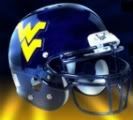Post by elp525 on Oct 16, 2011 6:58:33 GMT -5
Sunday, October 16, 2011
By Jenn Menendez
Pittsburgh Post-Gazette
Few moments in West Virginia athletic history have been as mercurial as these.
One moment football coach Dana Holgorsen jogs onto Mountaineer Field amid the roar of 62,000 on an electric September day, the program alive with possibility.
Next, the university is blindsided by defections from the Big East Conference.
Suddenly, the future of West Virginia athletics is being played out behind closed doors in what may be the most helter-skelter period in college football history, as institutions scramble to get into positions where they can maximize revenues from their football programs.
"It's almost like watching a poker game. You wonder what cards they're holding and where they're seated at the table," said David P. Synowka, professor and head of the department of sports management at Robert Morris University.
One month ago, the Big East lost Pitt and Syracuse to the Atlantic Coast Conference. Last week, Texas Christian reversed a decision to join the Big East in favor of Big 12 membership.
West Virginia athletic director Oliver Luck and university president Jim Clements have declined multiple requests for interviews on the subject of conference upheaval and how the university plans to deal with it.
The school could stay in a recast Big East. The league is trying to bolster its status as a Bowl Championship Series conference and is courting possible new members with an eye toward becoming a 12-school football conference. That would mean adding six schools to West Virginia, Cincinnati, Connecticut, Louisville, Rutgers and South Florida.
Some media reports have put West Virginia on the verge of an invitation to the Southeastern Conference, another to the Big 12, a third in some kind of combined version of Big East and Big 12.
The school's strength in the realignment game: perennial strong football and basketball programs, a rabid fan base that travels and a strong brand.
"I think the product we put out there is very appealing to a whole lot of people," Holgorsen said. "People want to come to West Virginia because of what you see. The atmosphere, the excitement, what you're putting out there on the field, what the athletic department brings to the table. Perennial top-20 programs in football, men's and women's basketball. Why wouldn't you want to be a part of it?
"The geography, landscape, is fantastic. Why wouldn't West Virginia be attractive from a conference realignment standpoint and from a recruit's standpoint? I firmly believe that."
West Virginia's weakness: a small television market.
So what is a small market like West Virginia with a nationally ranked football program to do?
Not much, said Keith Dunnavant, journalist and author of the book "The Fifty-Year Seduction: How Television Manipulated College Football from the Birth of the Modern NCAA to the Creation of the BCS."
"Historically, it's tough for a team like West Virginia that has been on that bubble," Dunnavant said. "They're not in one of the big premier conferences and now are tethered to this 'who knows what the heck's gonna happen' Big East. There's not much West Virginia can do to make itself more marketable. It's already as marketable as it can be."
Agreed, said Synowka, who likens the predicament to waiting for an invitation.
"They're in a challenging situation. Sort of like the girl waiting to be asked to the dance," he said. "You have no idea who's going to ask you. Is there a better offer coming down the road?"
Driven by the economic windfall of lucrative television contracts, where West Virginia ultimately lands -- the Big East or somewhere else -- is critical to its bottom line.
Today, West Virginia's athletic department operates with a $60 million annual budget, $7 million of which comes from Big East television revenue, said Mike Parsons, deputy director of athletics.
"And it's important, not only for the actual money but the recruiting aspect," said Dunnavant, the author. "Being in a conference that has a big time TV contract can move you up in the pecking order."
For fans, it's been an incredibly anxious time.
Kim Craig, a self-described die-hard Mountaineers fan and 35-year season ticket holder, said these days are far more troubling than when the ACC raided the Big East in 2003, taking Boston College, Miami and Virginia Tech.
"I think the anxiety is being created because of the uncertainty," said Craig, a Pittsburgh businessman and 1977 graduate of West Virginia. "From the long-term perspective, how is the program going to survive? I'd think West Virginia finding a way to be the white knight and create a survival situation for the Big East would be fantastic. If that doesn't work, where do they end up?"
It's a subject, said Craig, that comes up every Saturday home game with the multiple generations of 15 families he has been tailgating with for years in the Blue Lot outside of Milan Puskar Stadium.
"I've always been convinced college athletics are fantastic. But let's not overlook why they're there," he said. "My greatest concern is the student athletes. What's the impact? It may be fine for football and basketball, but what about all the other sports that need to be accommodated, and travel?"
Craig, whose grandchildren now attend games with him, endorsed the approach of university officials.
"I think they're being very smart and deliberate about it," he said. "No different than any important decision requires patience, deliberation and a good rational decision."
By Jenn Menendez
Pittsburgh Post-Gazette
Few moments in West Virginia athletic history have been as mercurial as these.
One moment football coach Dana Holgorsen jogs onto Mountaineer Field amid the roar of 62,000 on an electric September day, the program alive with possibility.
Next, the university is blindsided by defections from the Big East Conference.
Suddenly, the future of West Virginia athletics is being played out behind closed doors in what may be the most helter-skelter period in college football history, as institutions scramble to get into positions where they can maximize revenues from their football programs.
"It's almost like watching a poker game. You wonder what cards they're holding and where they're seated at the table," said David P. Synowka, professor and head of the department of sports management at Robert Morris University.
One month ago, the Big East lost Pitt and Syracuse to the Atlantic Coast Conference. Last week, Texas Christian reversed a decision to join the Big East in favor of Big 12 membership.
West Virginia athletic director Oliver Luck and university president Jim Clements have declined multiple requests for interviews on the subject of conference upheaval and how the university plans to deal with it.
The school could stay in a recast Big East. The league is trying to bolster its status as a Bowl Championship Series conference and is courting possible new members with an eye toward becoming a 12-school football conference. That would mean adding six schools to West Virginia, Cincinnati, Connecticut, Louisville, Rutgers and South Florida.
Some media reports have put West Virginia on the verge of an invitation to the Southeastern Conference, another to the Big 12, a third in some kind of combined version of Big East and Big 12.
The school's strength in the realignment game: perennial strong football and basketball programs, a rabid fan base that travels and a strong brand.
"I think the product we put out there is very appealing to a whole lot of people," Holgorsen said. "People want to come to West Virginia because of what you see. The atmosphere, the excitement, what you're putting out there on the field, what the athletic department brings to the table. Perennial top-20 programs in football, men's and women's basketball. Why wouldn't you want to be a part of it?
"The geography, landscape, is fantastic. Why wouldn't West Virginia be attractive from a conference realignment standpoint and from a recruit's standpoint? I firmly believe that."
West Virginia's weakness: a small television market.
So what is a small market like West Virginia with a nationally ranked football program to do?
Not much, said Keith Dunnavant, journalist and author of the book "The Fifty-Year Seduction: How Television Manipulated College Football from the Birth of the Modern NCAA to the Creation of the BCS."
"Historically, it's tough for a team like West Virginia that has been on that bubble," Dunnavant said. "They're not in one of the big premier conferences and now are tethered to this 'who knows what the heck's gonna happen' Big East. There's not much West Virginia can do to make itself more marketable. It's already as marketable as it can be."
Agreed, said Synowka, who likens the predicament to waiting for an invitation.
"They're in a challenging situation. Sort of like the girl waiting to be asked to the dance," he said. "You have no idea who's going to ask you. Is there a better offer coming down the road?"
Driven by the economic windfall of lucrative television contracts, where West Virginia ultimately lands -- the Big East or somewhere else -- is critical to its bottom line.
Today, West Virginia's athletic department operates with a $60 million annual budget, $7 million of which comes from Big East television revenue, said Mike Parsons, deputy director of athletics.
"And it's important, not only for the actual money but the recruiting aspect," said Dunnavant, the author. "Being in a conference that has a big time TV contract can move you up in the pecking order."
For fans, it's been an incredibly anxious time.
Kim Craig, a self-described die-hard Mountaineers fan and 35-year season ticket holder, said these days are far more troubling than when the ACC raided the Big East in 2003, taking Boston College, Miami and Virginia Tech.
"I think the anxiety is being created because of the uncertainty," said Craig, a Pittsburgh businessman and 1977 graduate of West Virginia. "From the long-term perspective, how is the program going to survive? I'd think West Virginia finding a way to be the white knight and create a survival situation for the Big East would be fantastic. If that doesn't work, where do they end up?"
It's a subject, said Craig, that comes up every Saturday home game with the multiple generations of 15 families he has been tailgating with for years in the Blue Lot outside of Milan Puskar Stadium.
"I've always been convinced college athletics are fantastic. But let's not overlook why they're there," he said. "My greatest concern is the student athletes. What's the impact? It may be fine for football and basketball, but what about all the other sports that need to be accommodated, and travel?"
Craig, whose grandchildren now attend games with him, endorsed the approach of university officials.
"I think they're being very smart and deliberate about it," he said. "No different than any important decision requires patience, deliberation and a good rational decision."





